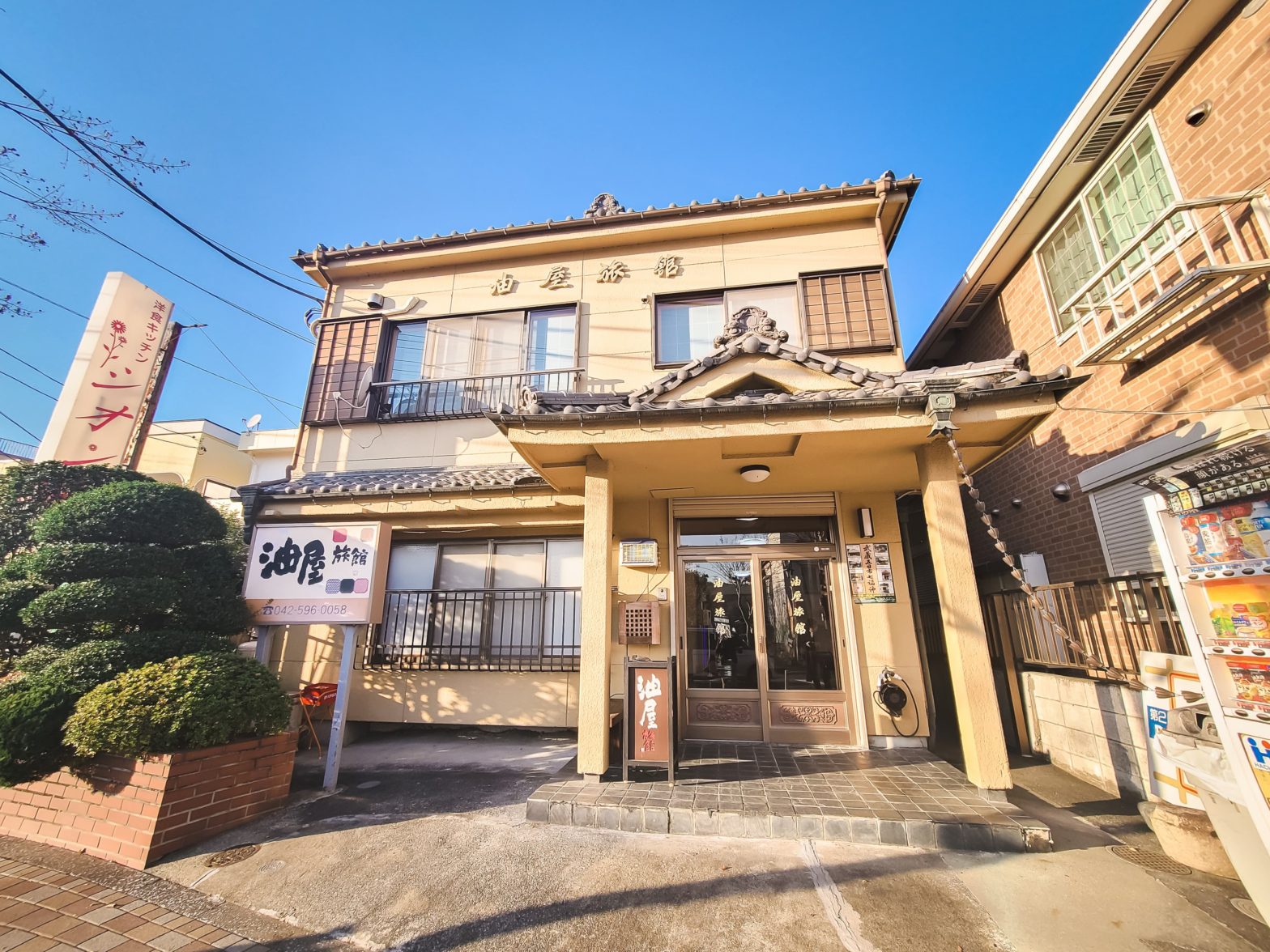To the far west end of Tokyo prefecture, far removed from the city lights and crowds of people lies an area called Akiruno, home to Akigawa Keikoku Valley and one of Tokyo’s best-kept nature secrets. Although I have lived in Tokyo for over 11 years now, this is an area that I have never visited, and admittedly know very little about. For me, the trip requires riding high-speed train from Shinjuku to a station called Tachikawa, and then switching to a local train that only comes once every 20-30 minutes.
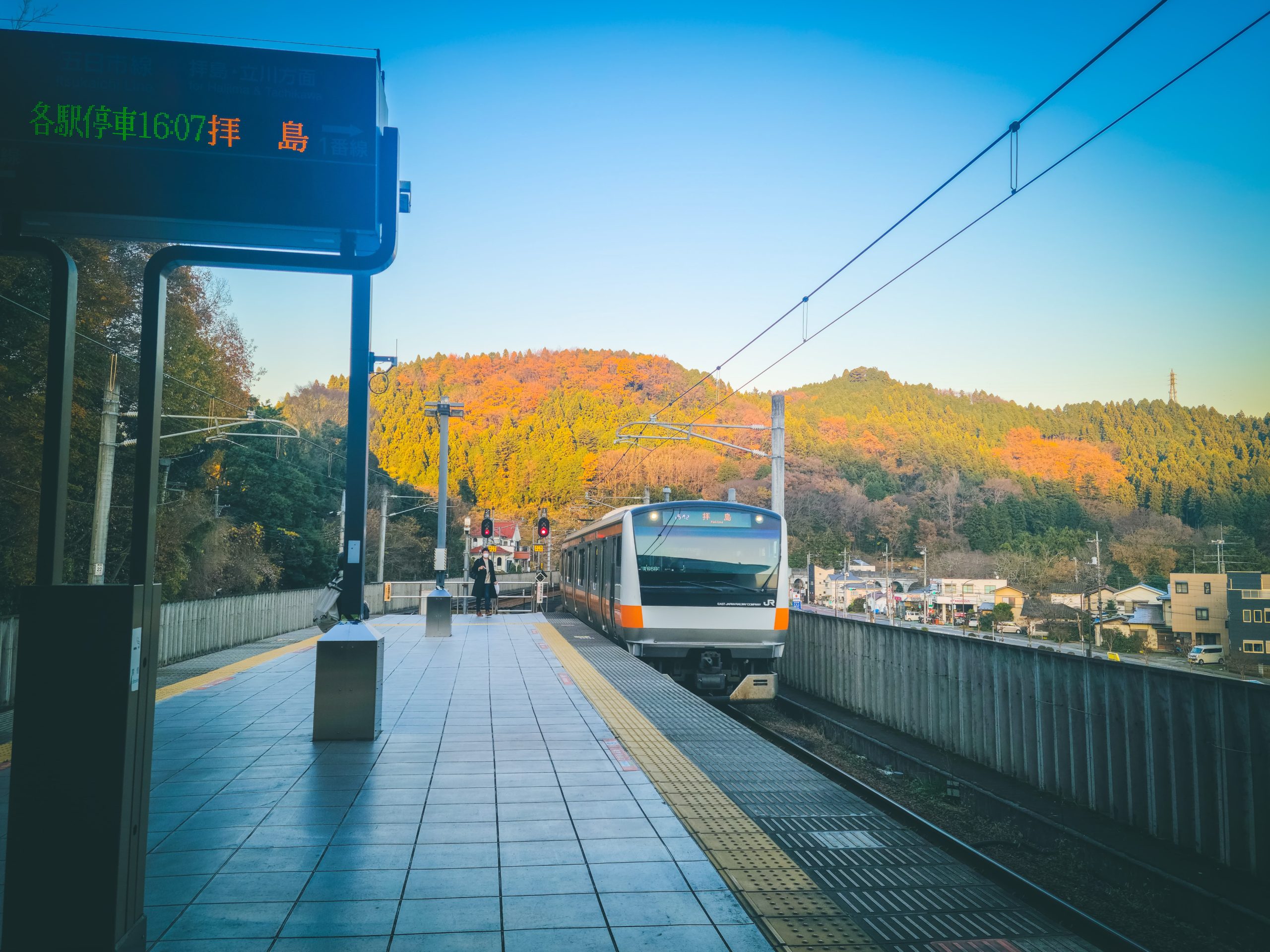
When located on a map, Akiruno lies at the fontier of Tokyo prefecture—anything further west leads to a lush green mountainous region. The area is also home to the traditional inn I’m visiting today, Aburaya Ryokan.
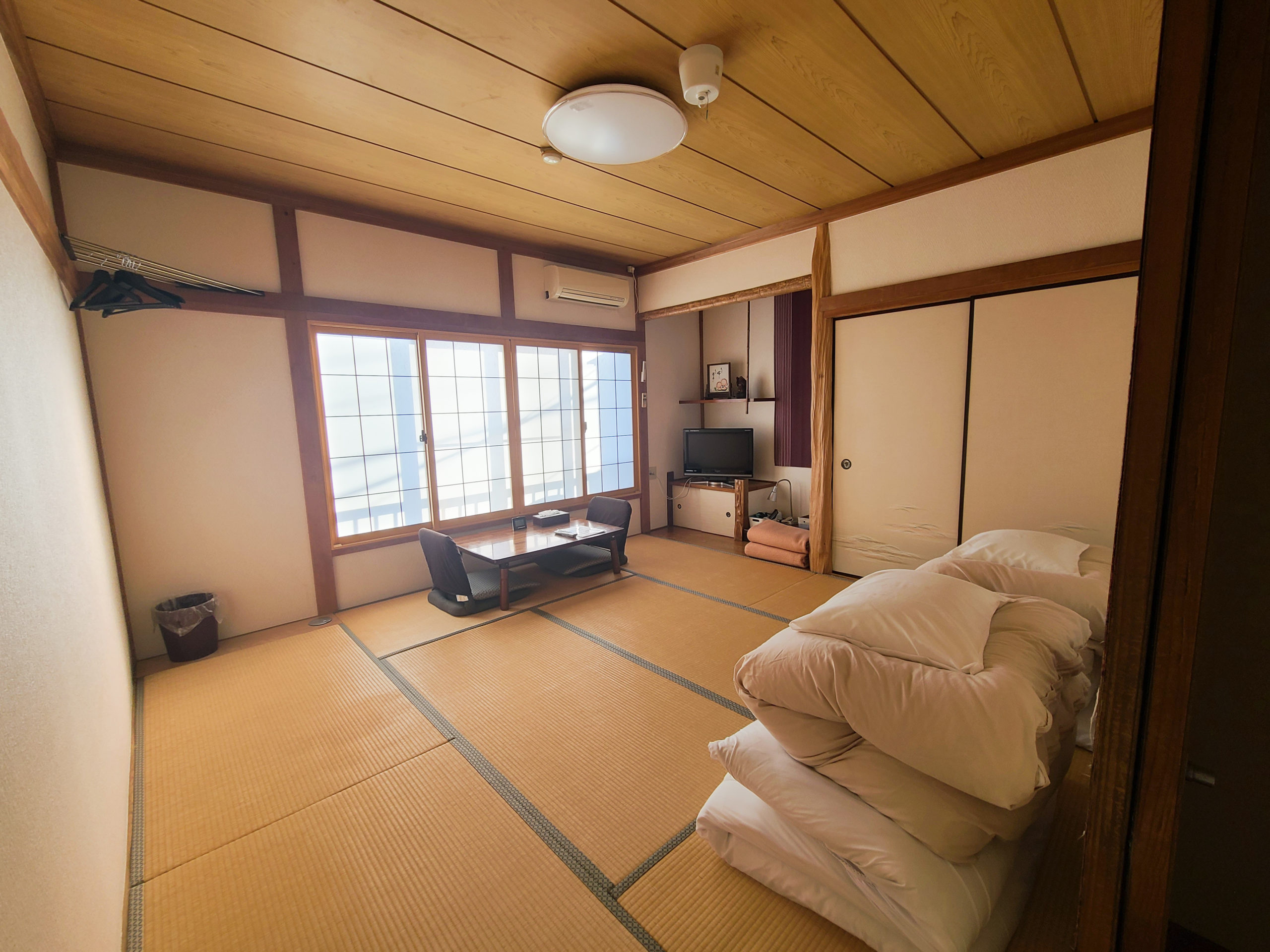
It takes about a 12-minute walk to get there on foot from the nearest station, but there is a bus that cuts that time down to a minute. The front entrance, a mix of traditional tiles and modern architecture, leads to a very simple and minimalistic lobby. Everything looks crisp and clean.
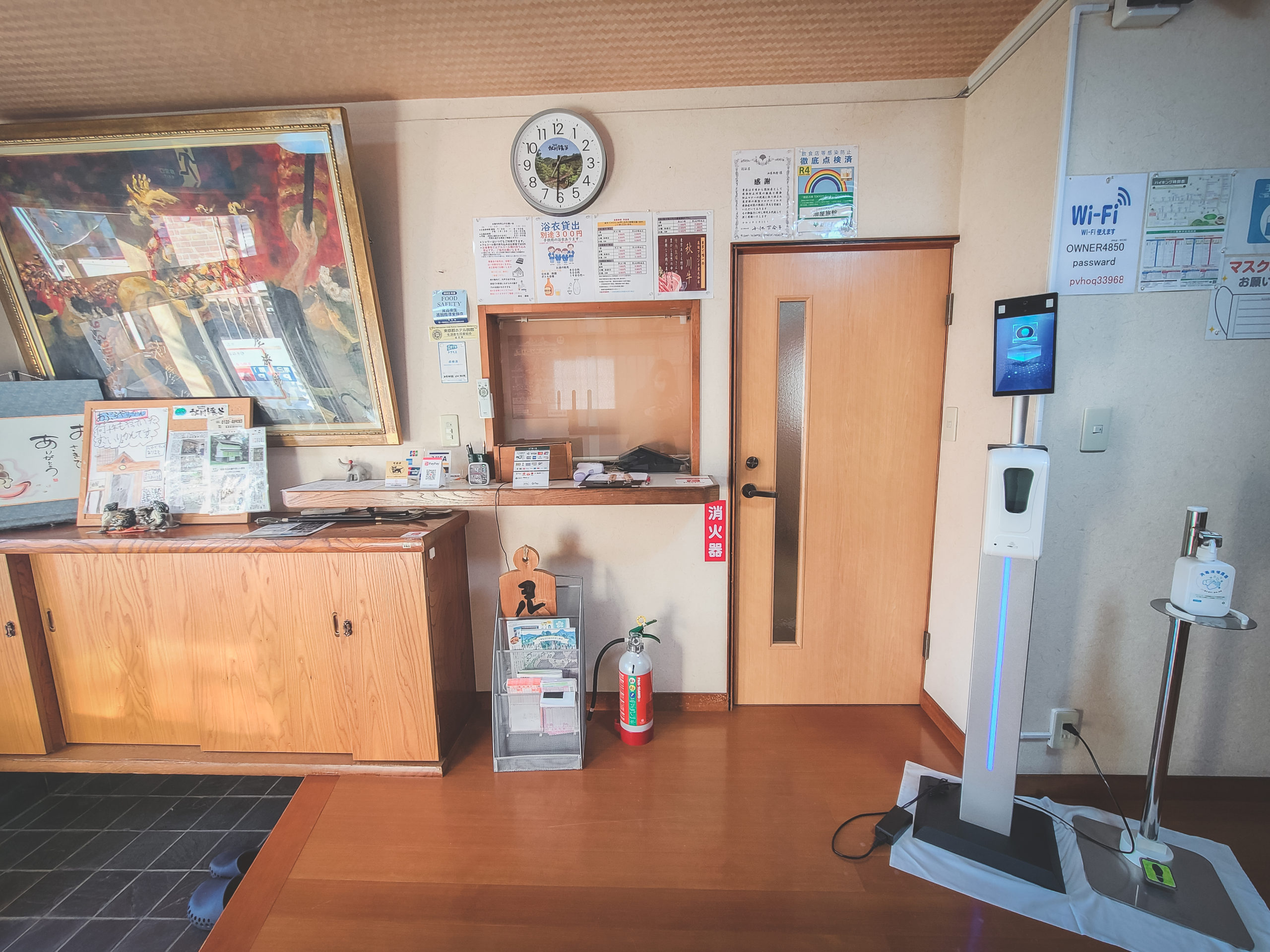
As I step up from the genkan, the traditional entrance where one removes their shoes, I notice a top-of-the-line automatic hand-sanitizer dispenser with a video-screen thermometer, meant to act as a measure against the spread of Covid-19.
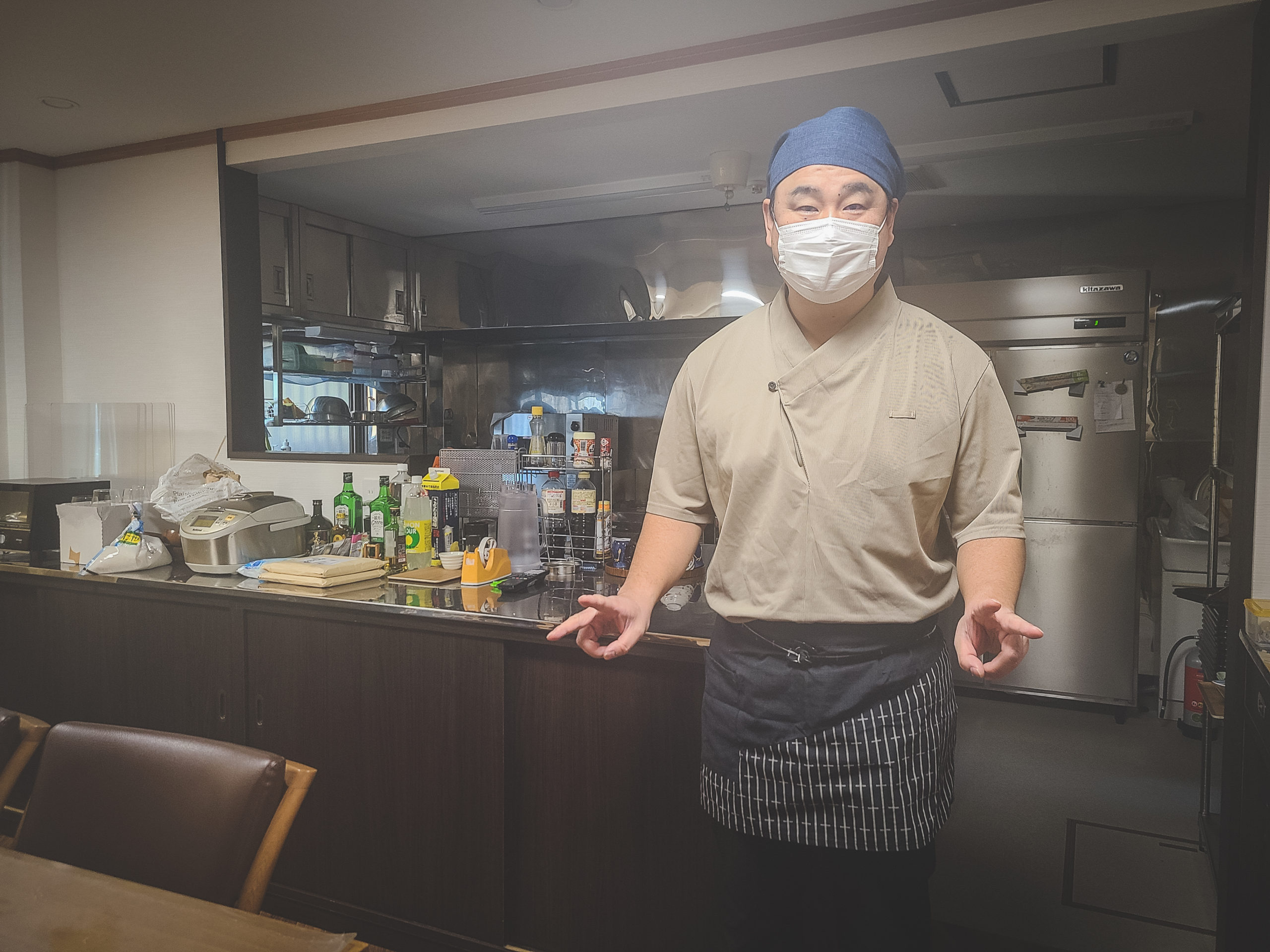
A tall and burly man greets me and introduces himself as Numada Mitsuo, owner of the ryokan. We take a seat in the adjacent room, which is also connected to a professional-looking spacious kitchen, the type that one would see at a restaurant. Everything looks as if it has just been remodeled.
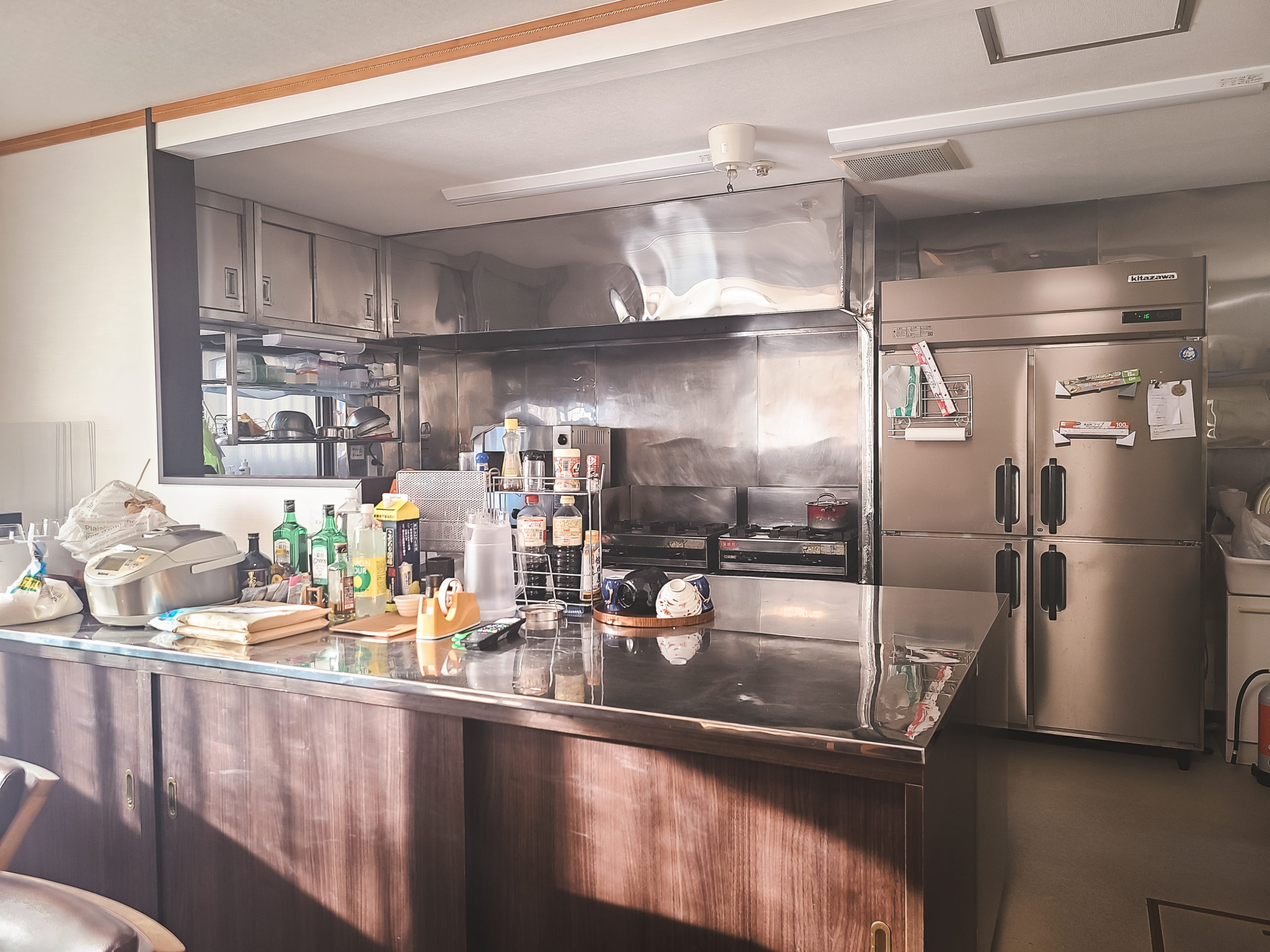
Aburaya Ryokan, as the name suggests, used to be a shop that sold oil during the Meiji period, over 100 years ago. At the time it was built as a nagaya, the name given to a certain type of long building—this original state is displayed in an illustration of the original Aburaya hanging in the genkan.
Originally, the building was the house and ryokan run by a relative, his grandfather’s younger sister. Because Numada-san used to work at the ryokan when he was young, and his grandfather’s younger sister had no children, Numada-san was adopted into her family to inherit the business, officially taking on her legal surname as is the custom.
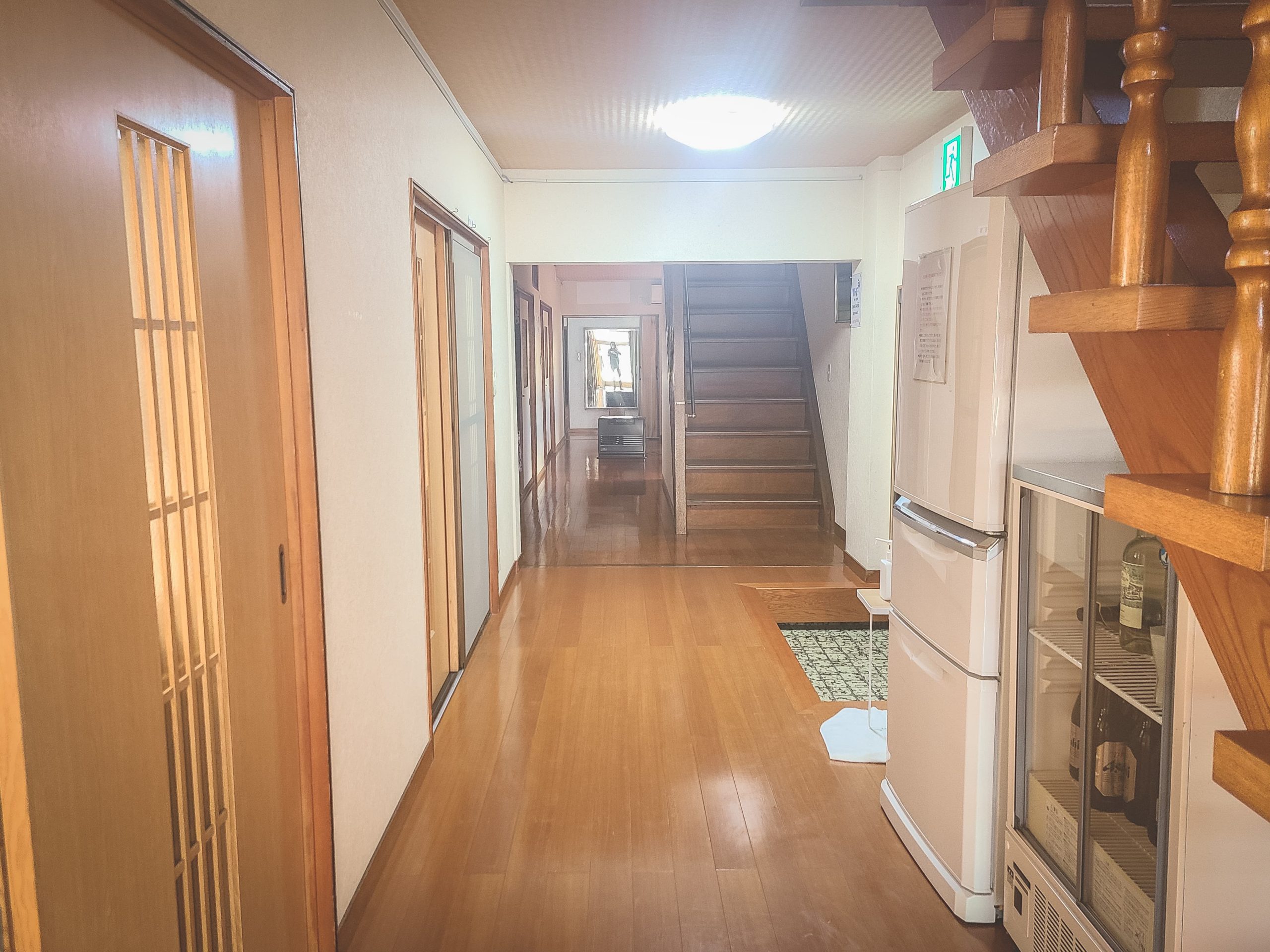
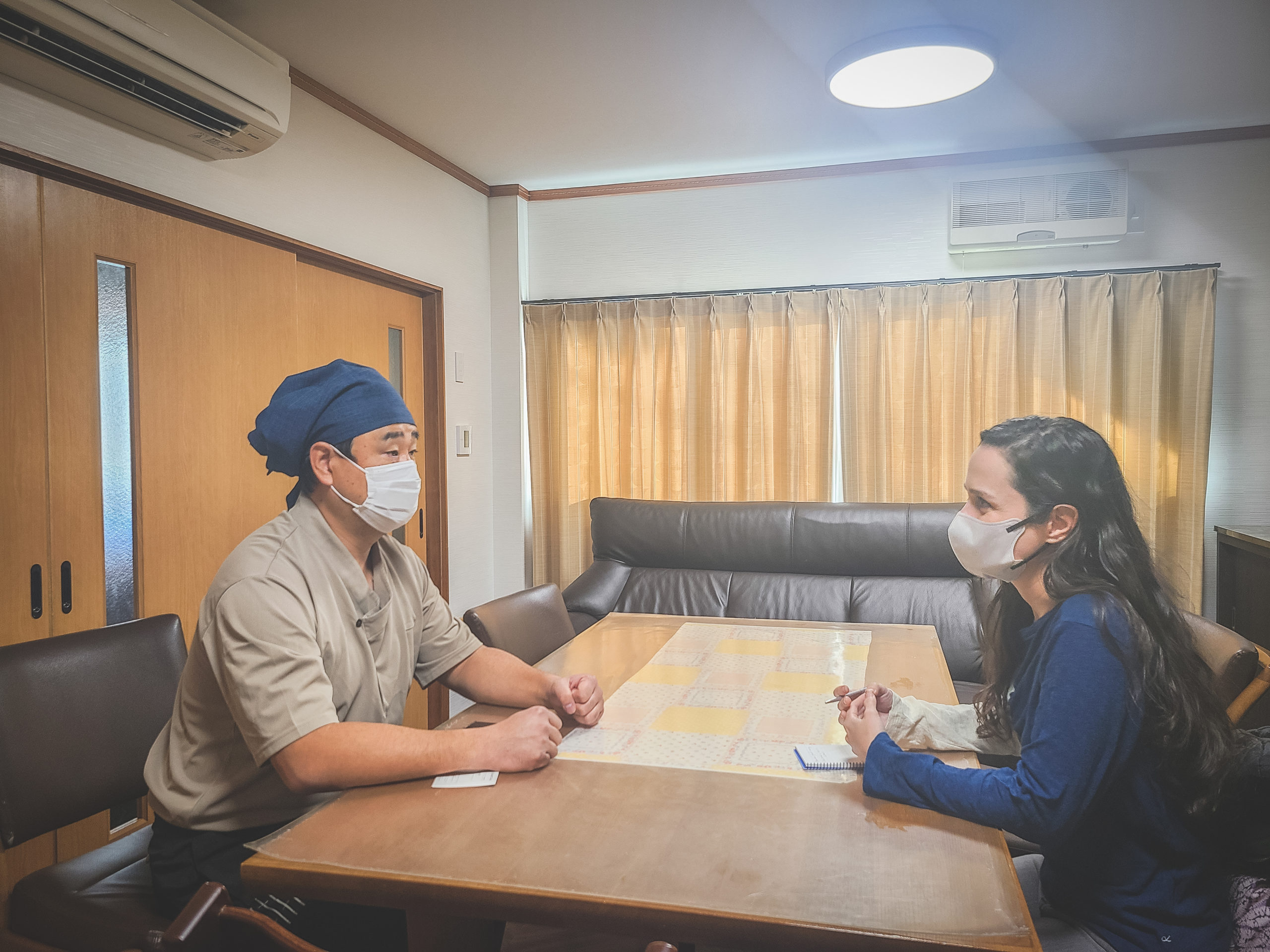
It has now been over 10 years since Numada-san has completely taken over the ryokan, the original building completely remodeled for a crisp and clean look.
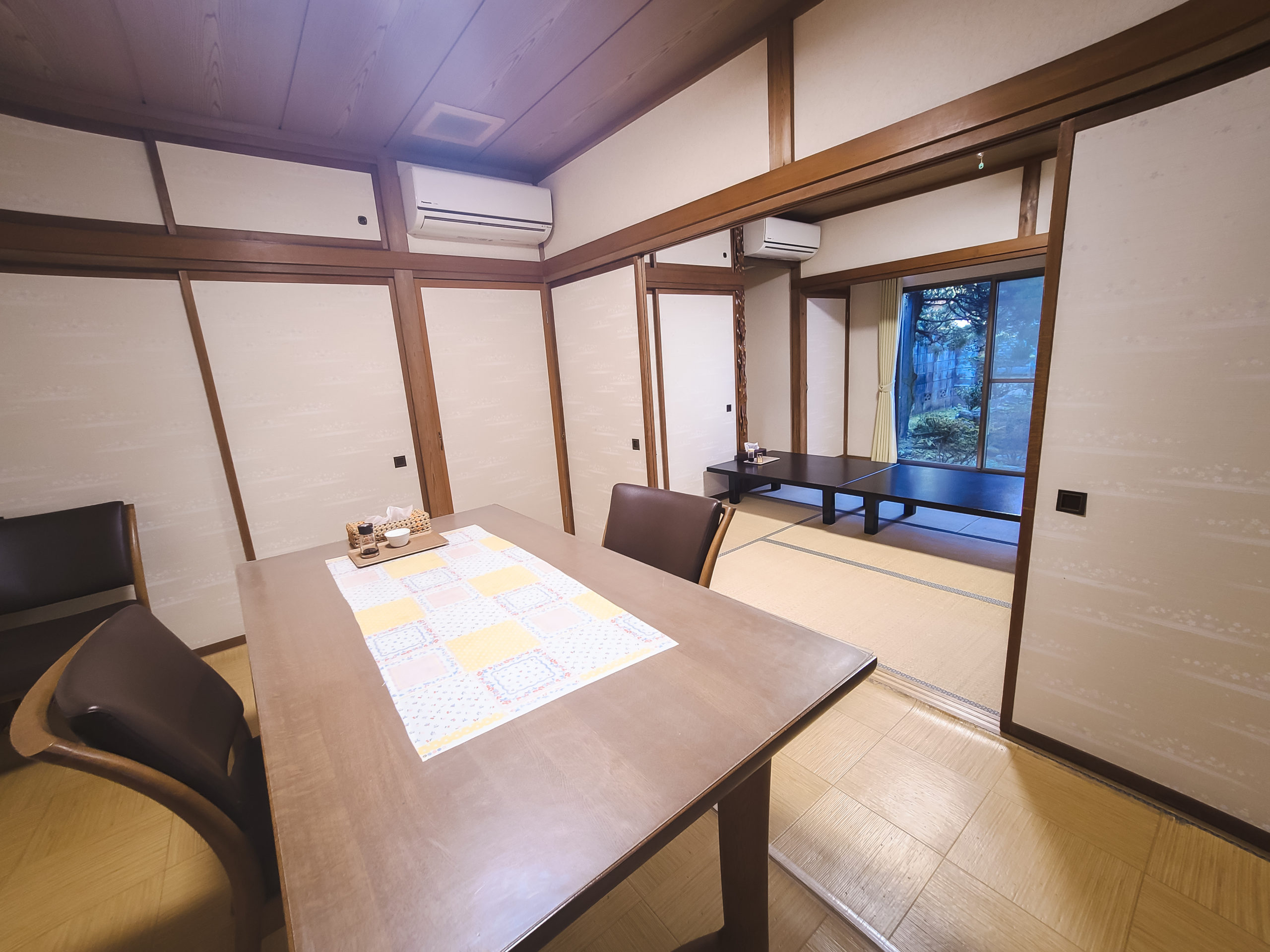
Currently it has a total of eight traditional washitsu rooms, one western-style room, and two enkai rooms used for big gatherings/parties.
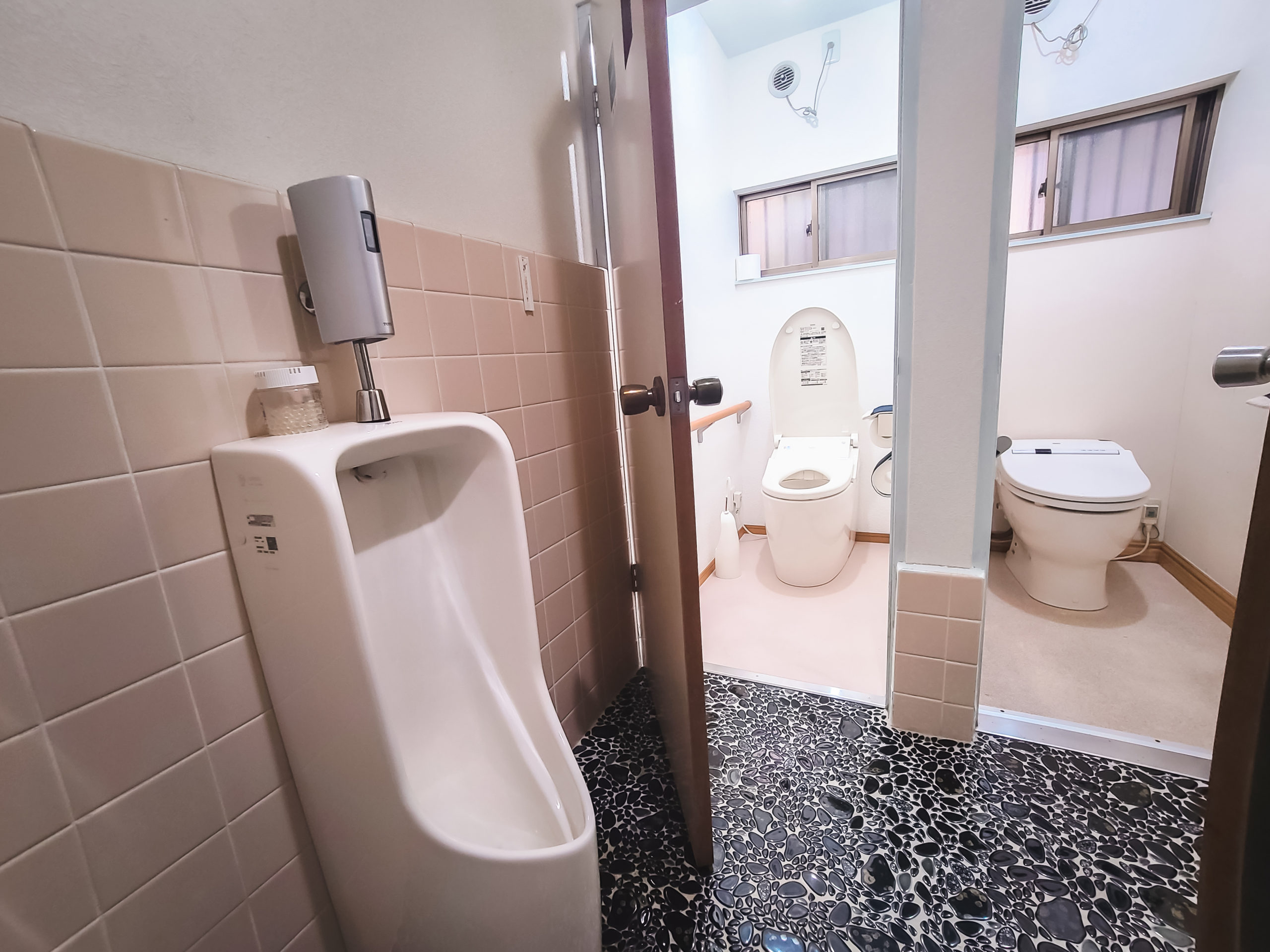
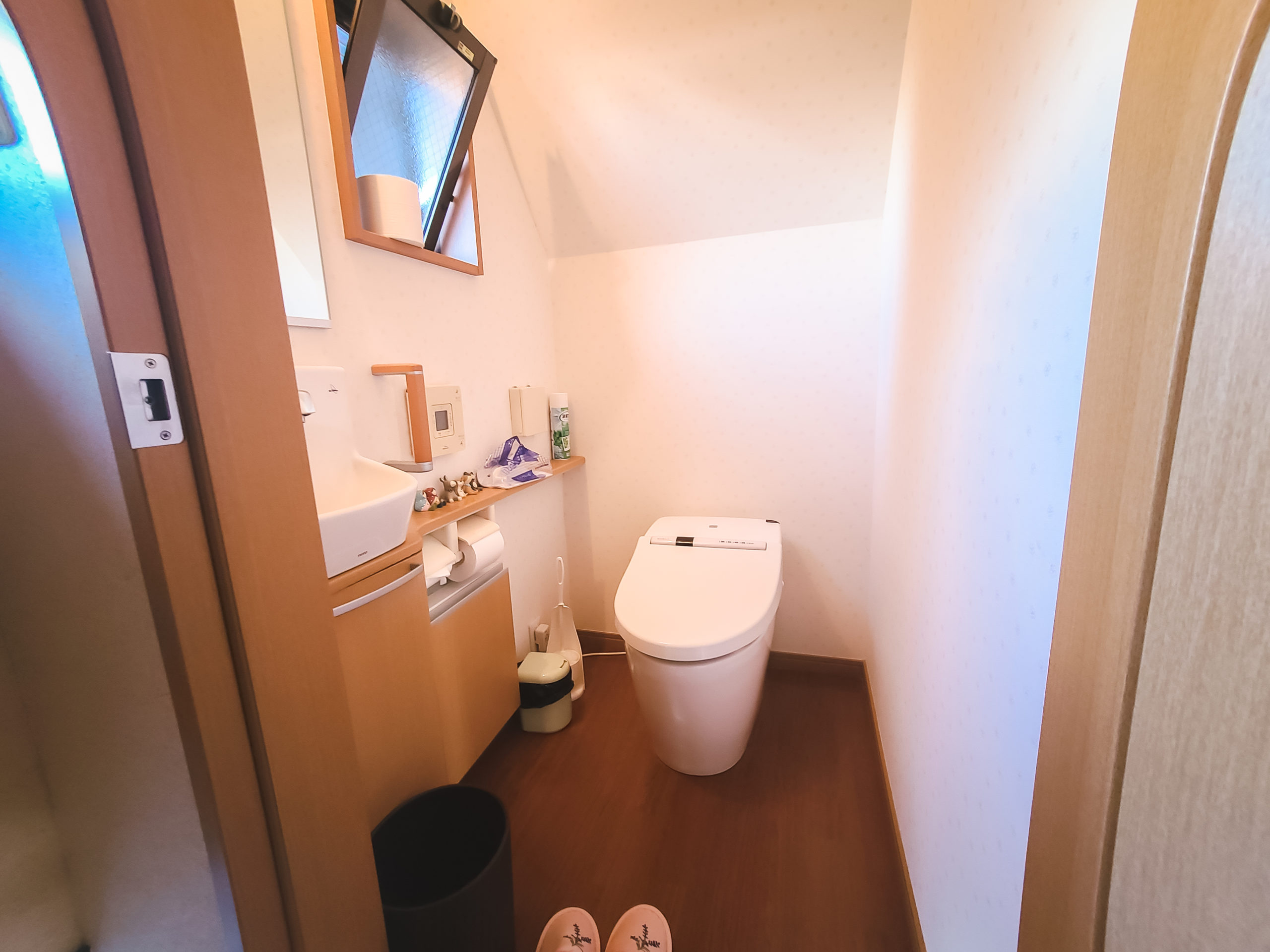
The second floor is where the guestrooms are. The hallway is complete with a rest corner and a full length mirror.
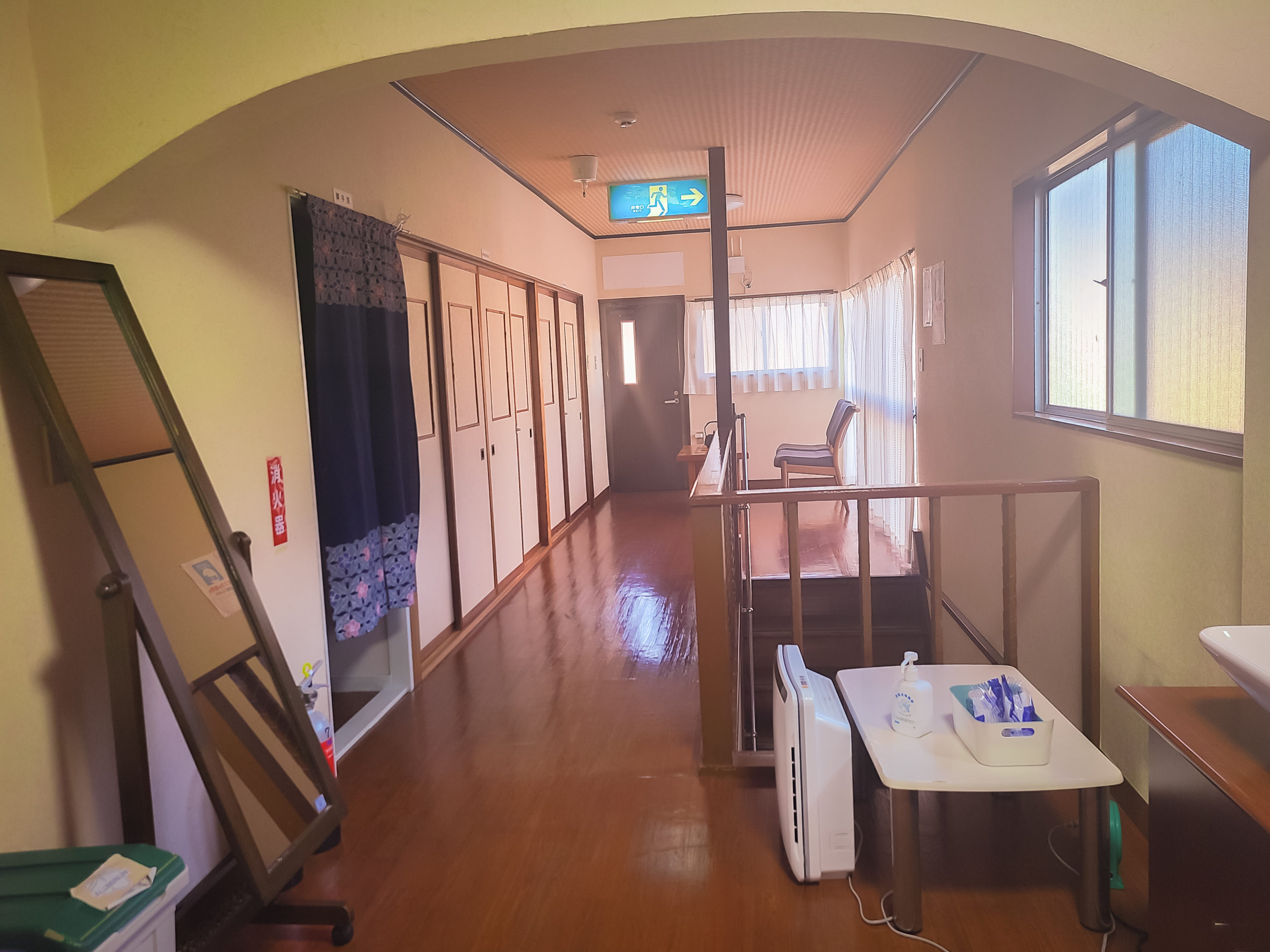
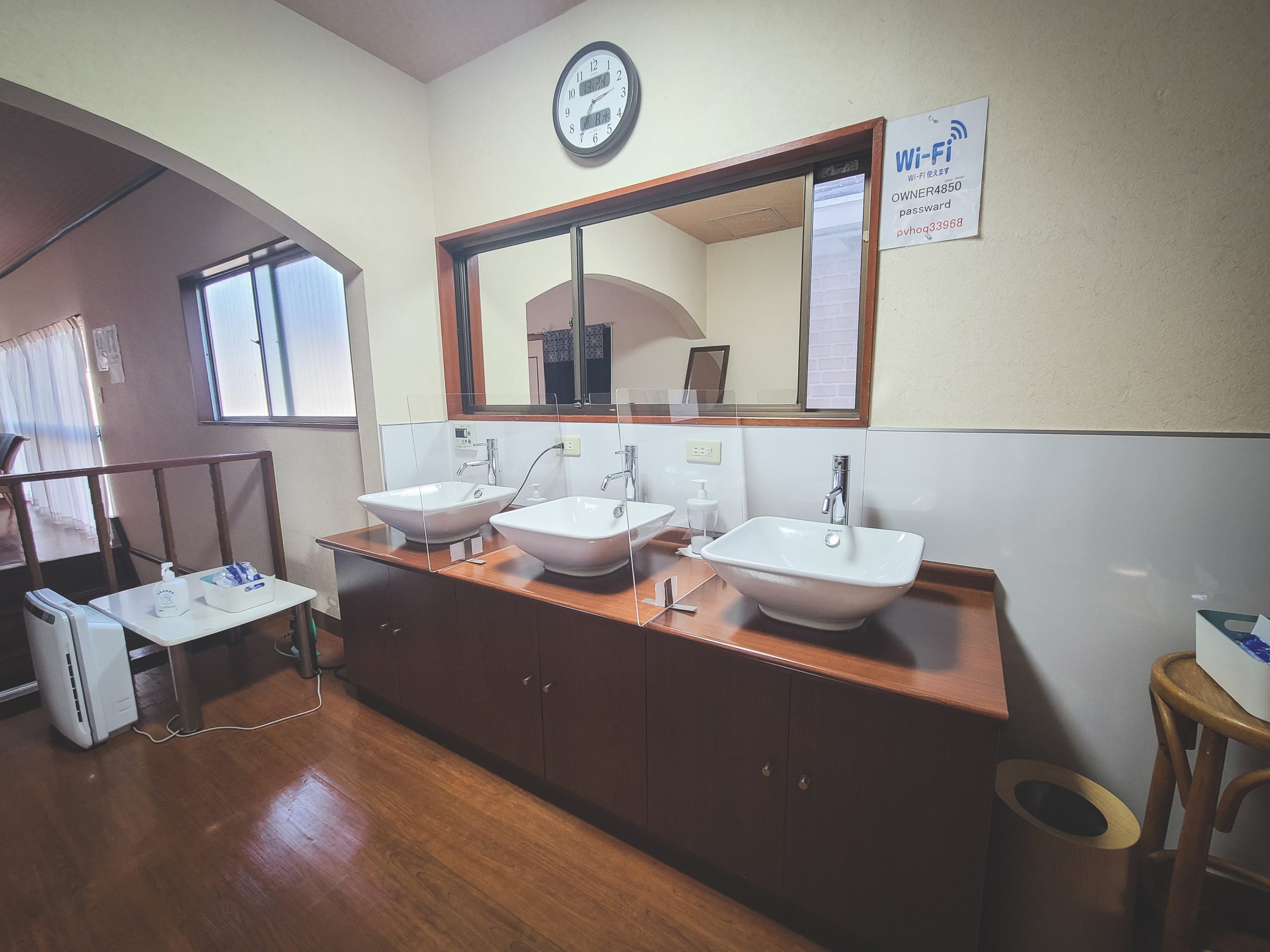
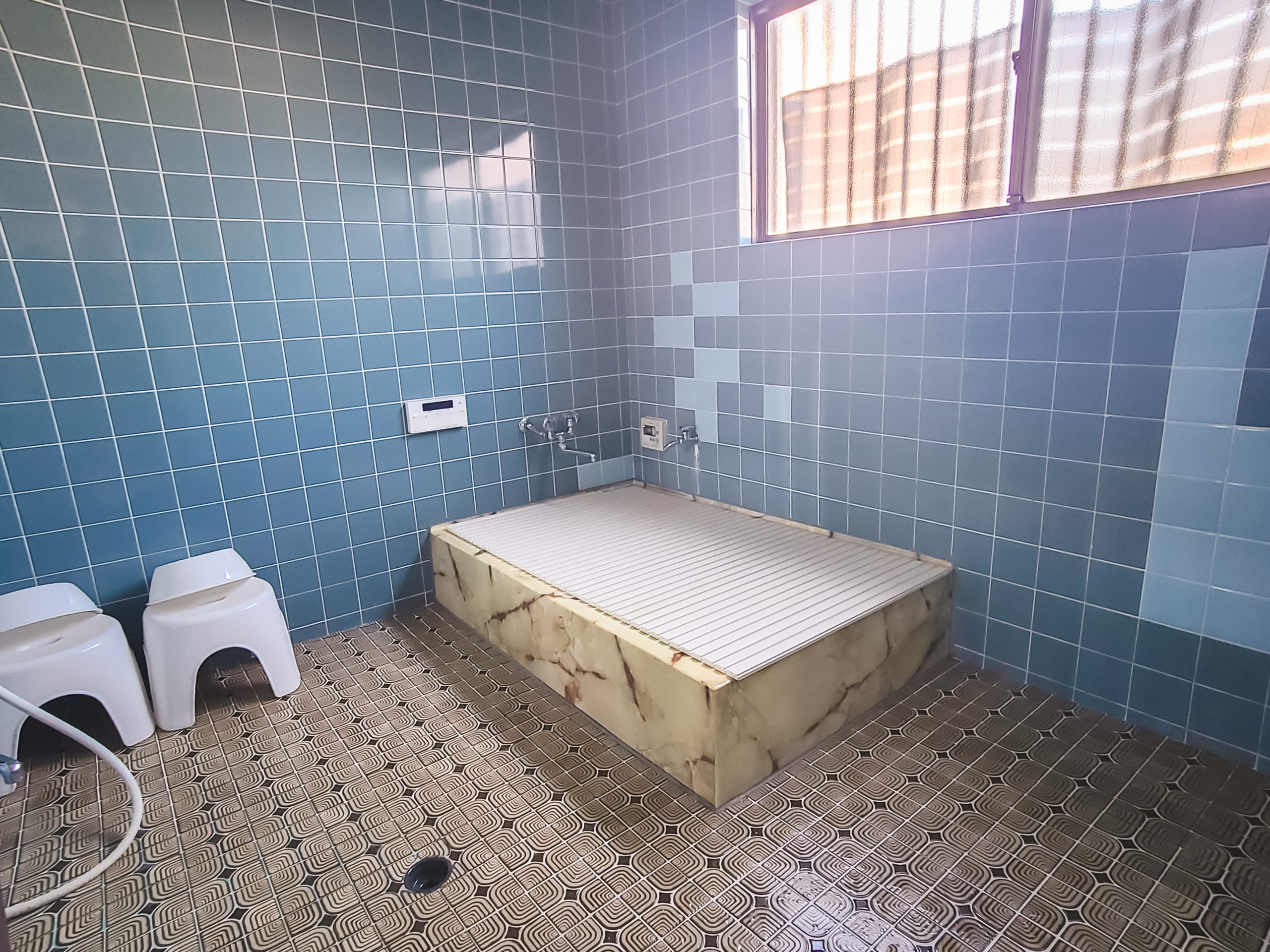
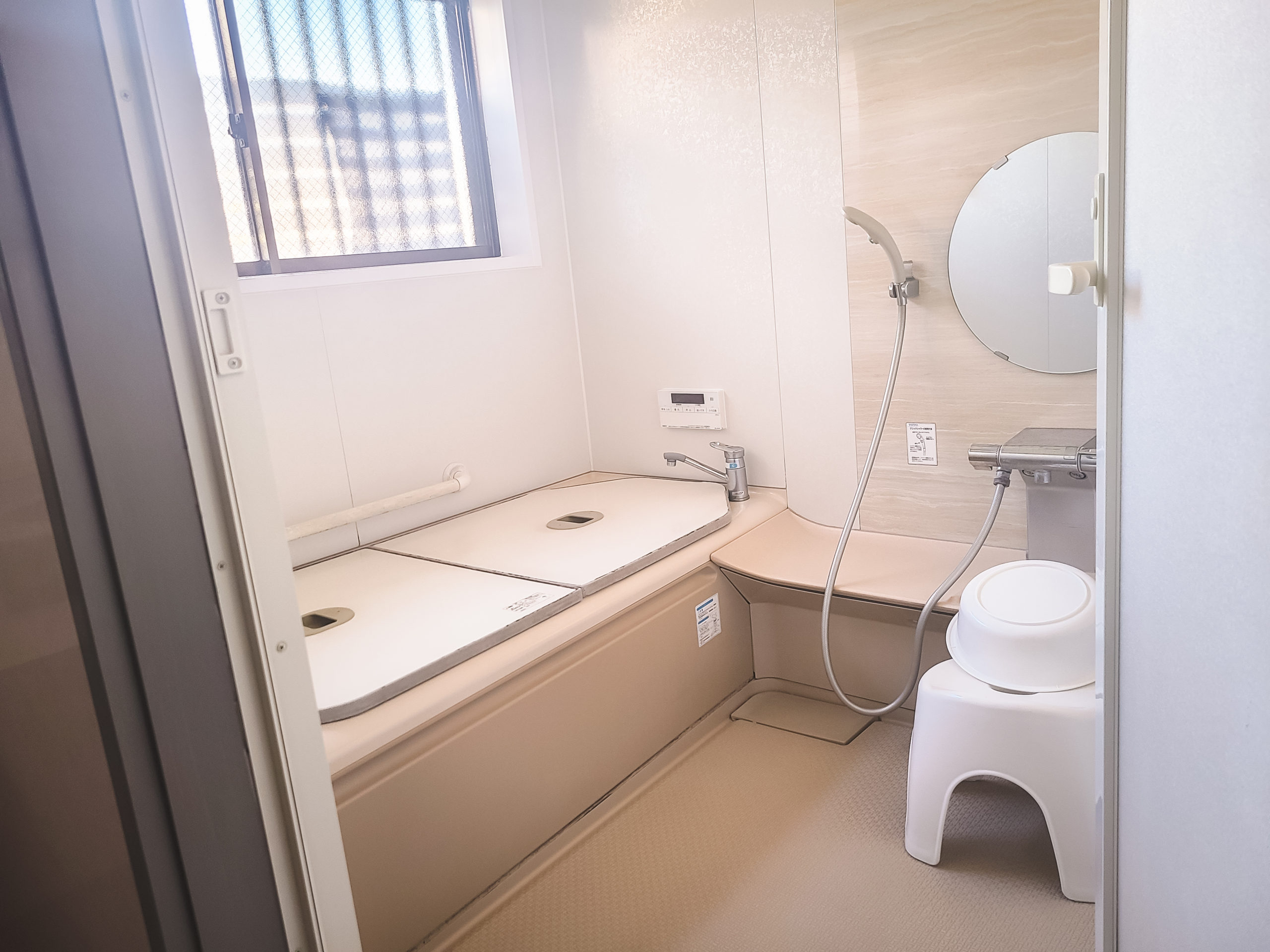
While the ryokan features state-of-the-art toilets (one of which is a women-only toilet), three baths that can be reserved for private use, and modern bedding in both futon and mattress form, some of the traditional washitsu rooms still retain their original woodwork—simple pillars and posts integrated into the room which are actually quite rare and precious.
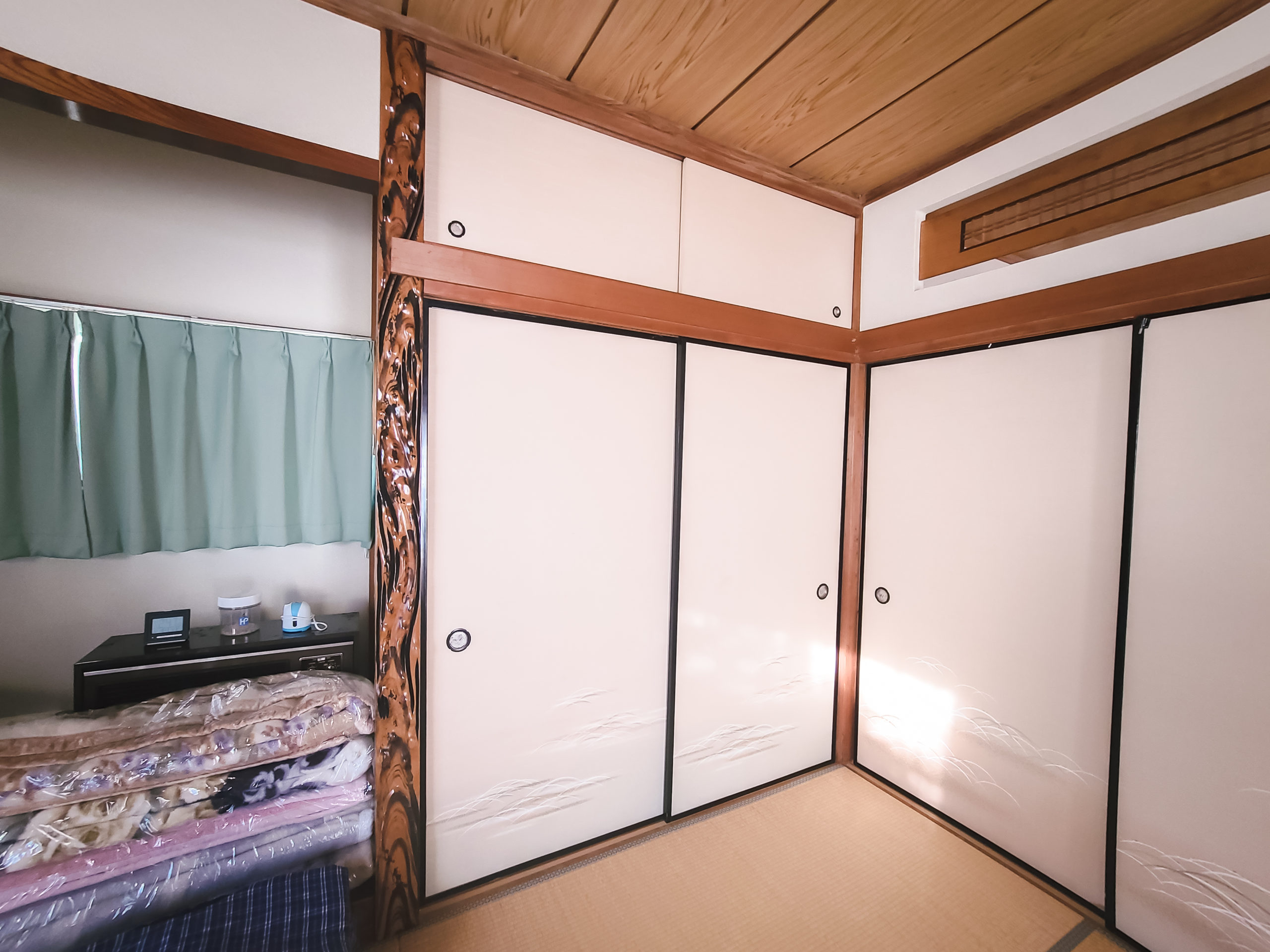
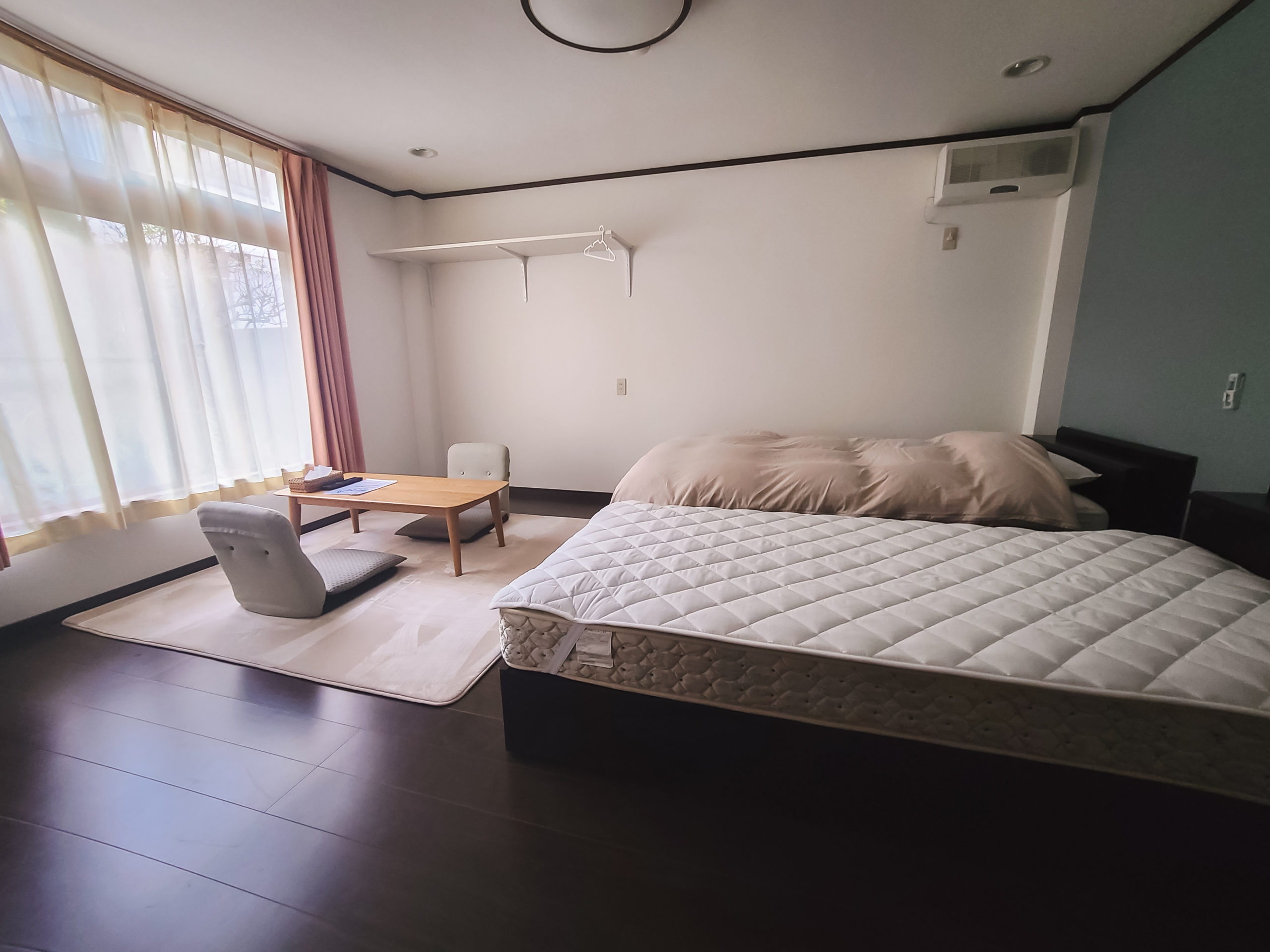
Numada-san mentions that ryokan didn’t host tourists very often before the pandemic. In fact, it was often used by people staying in the area for long periods of time for construction work, or sometimes by groups that come to the area for training camp. Nowadays, a lot people have started coming to the area to enjoy the abundant nature with activities such as hiking and cycling. Numada-san is very laid-back, so when guests request for special accommodations like storing their high-end cycling bikes indoors, he is happy to oblige.
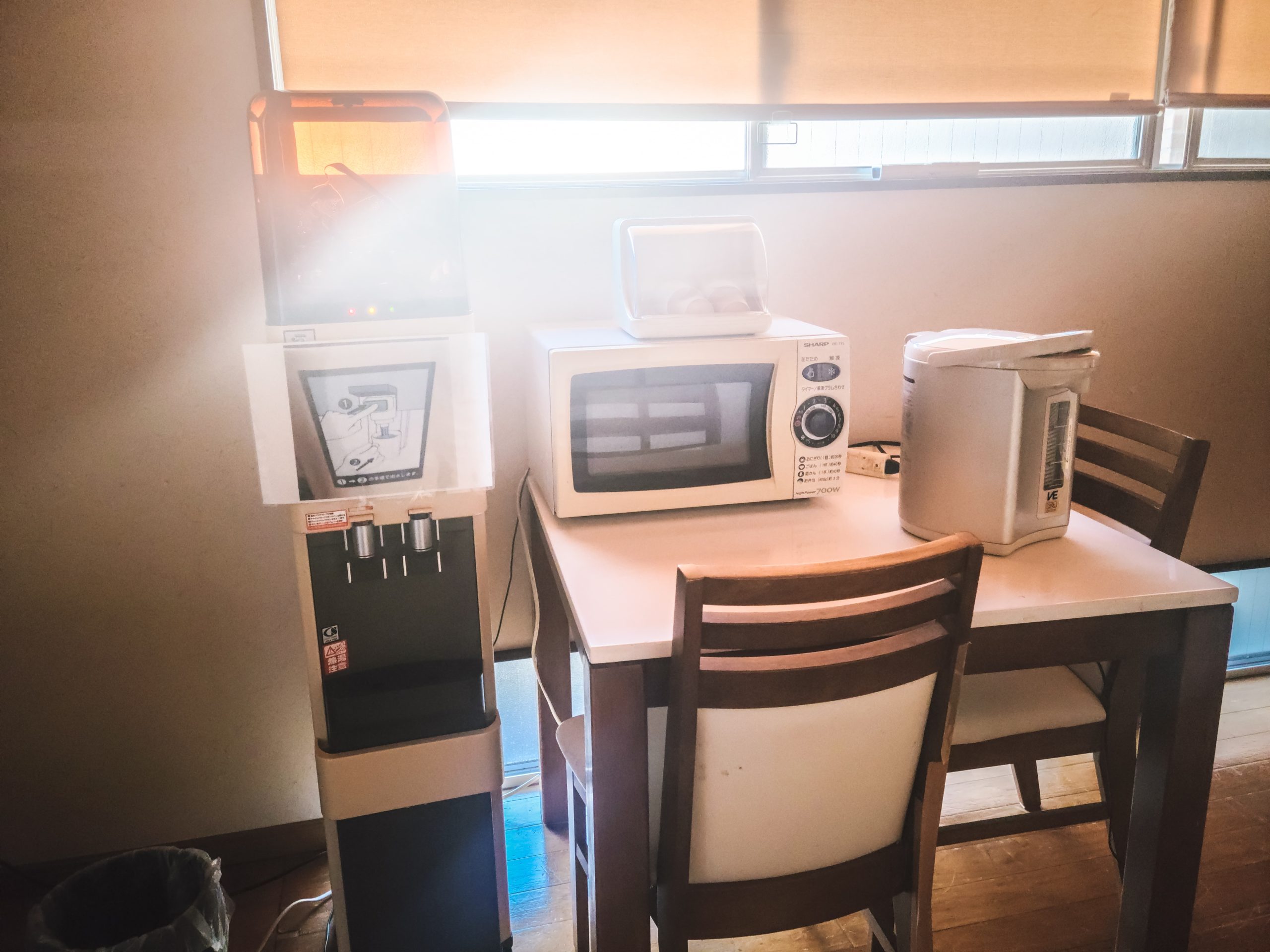
If you do decide to stay at Aburaya, be sure to include breakfast and dinner in your stay. Not many shops are open in the area at night, and it’s a shame to miss Numada-san’s wife’s cooking, especially since it features local seasonal ingredients.
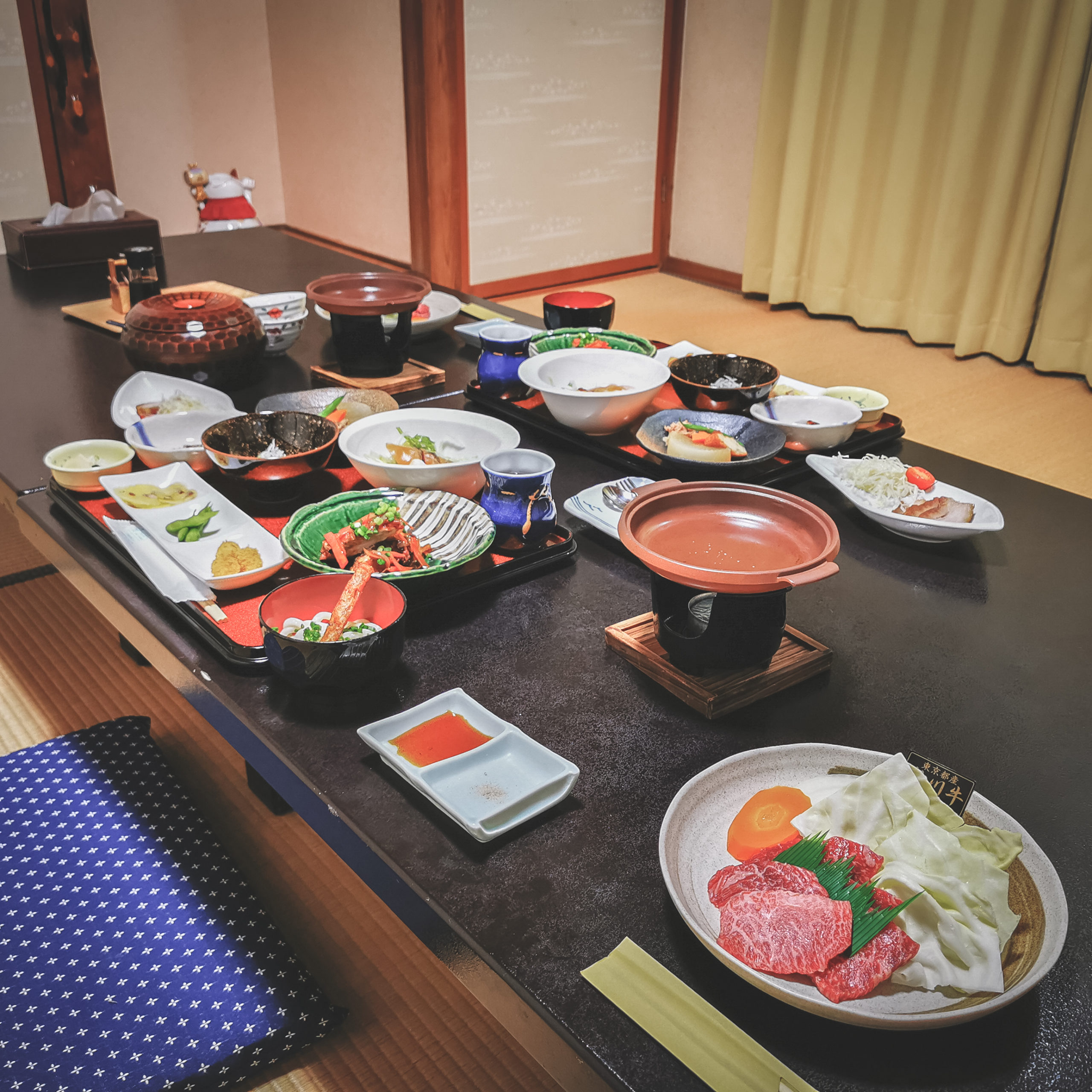
There’s even an option to add a dish with the famous wagyu beef of the area: Akigawa-gyu. Numada-san informs me that this beef can only be purchased at the meat shop nearby. What makes it even more enticing is that the total price of the stay is very reasonable—it’s practically worth staying here just for the food.
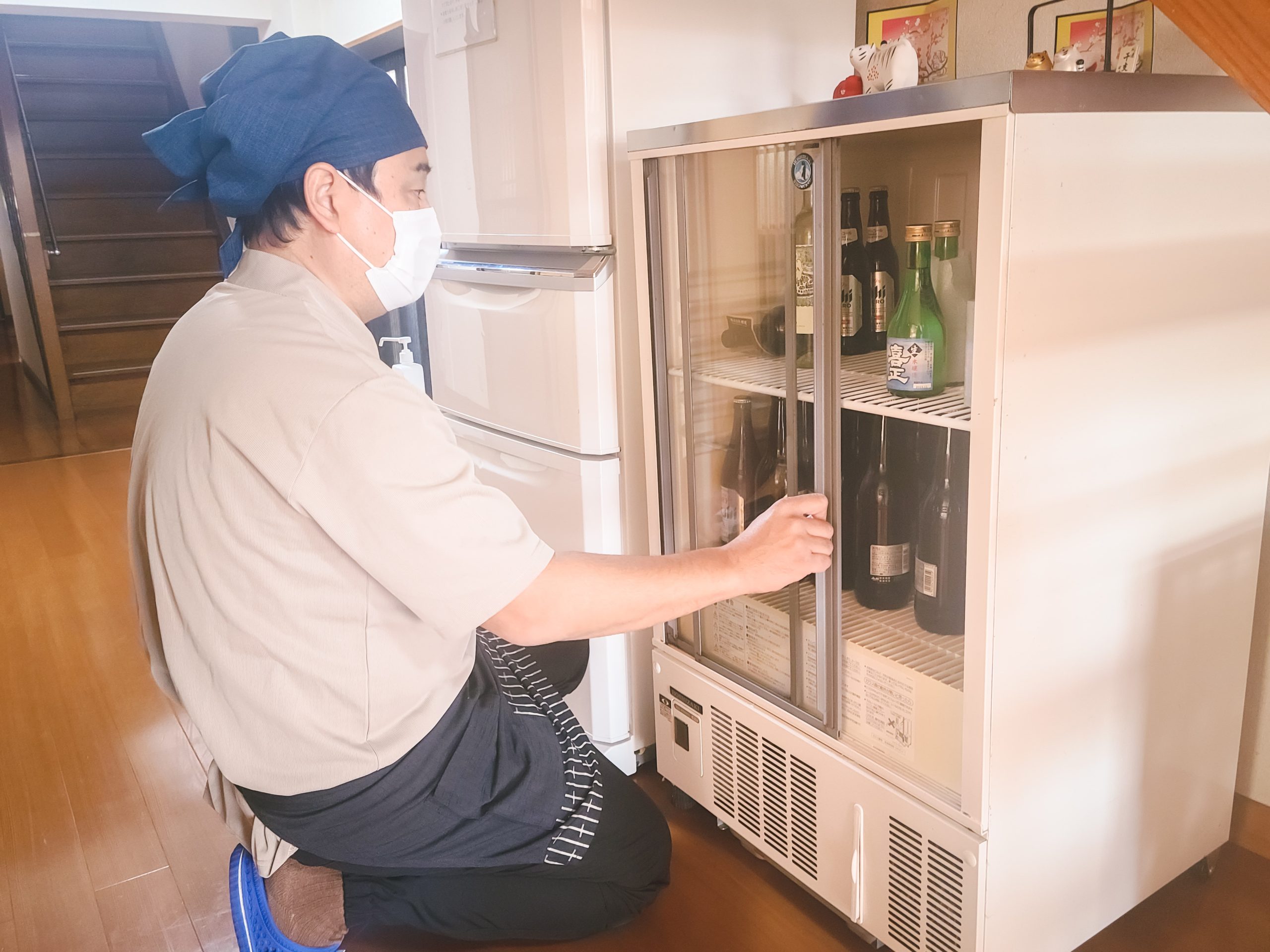
Numada-san also has a selection of various wines and ji-zake, local Japanese sake, that he selects to match the food on the menu, or according to his mood.
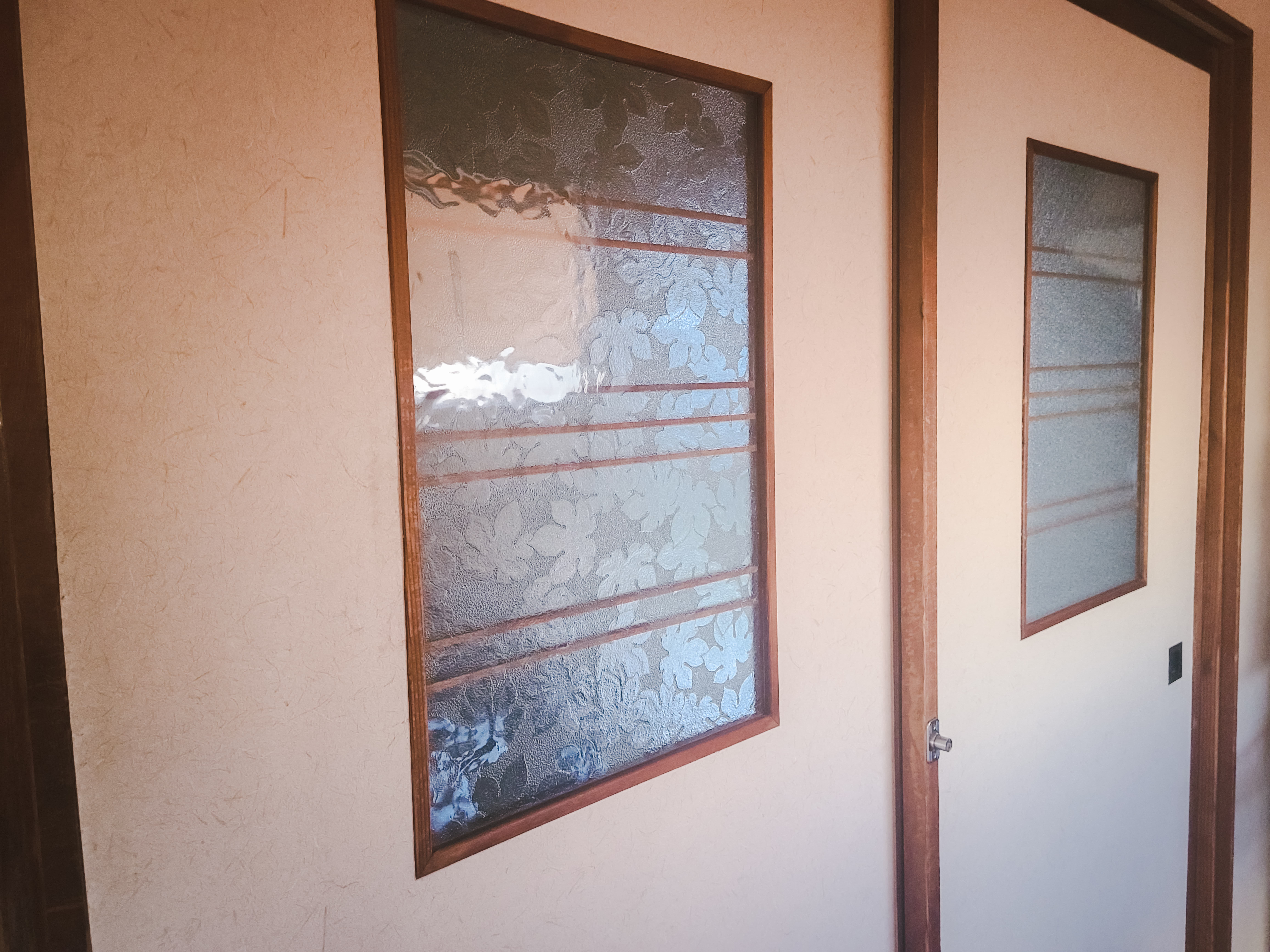
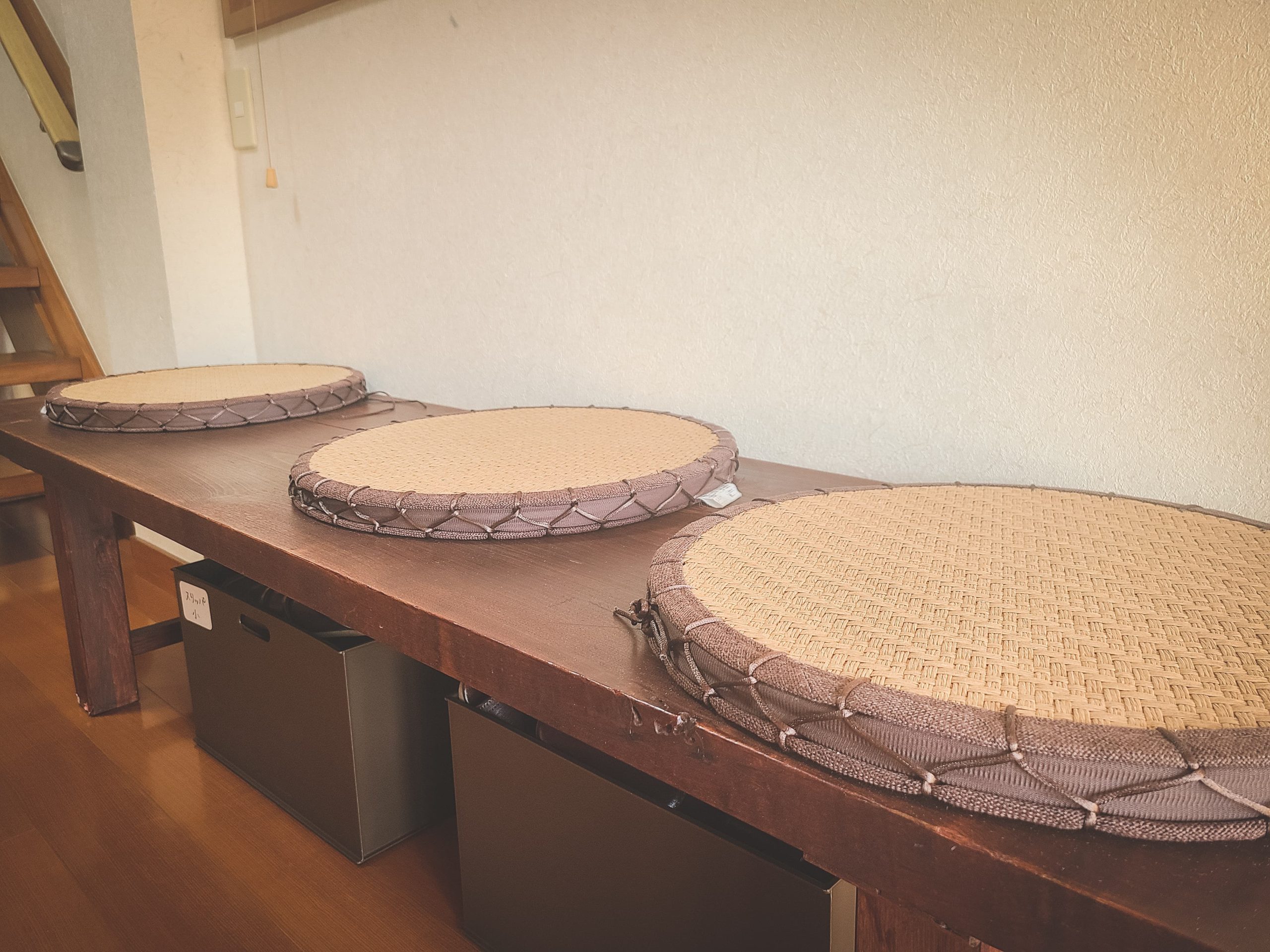
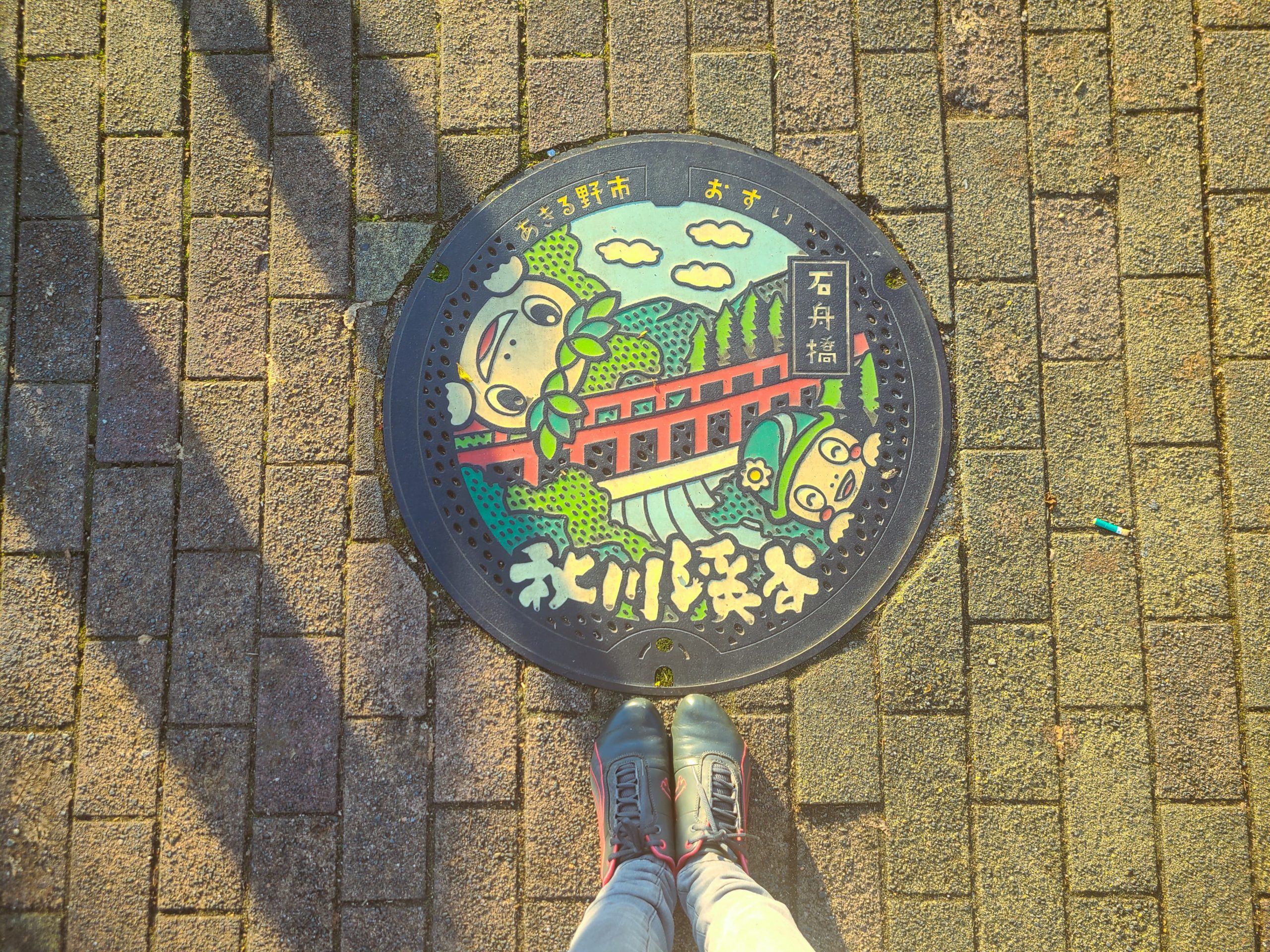
While I don’t have the chance to try Aburaya’s dinner menu, I decide to stop by the nearby meat shop to get some Akigawa-gyu for myself. If the beef croquette sold at the shop is any indication, my personally-prepared beef dish is promising.
